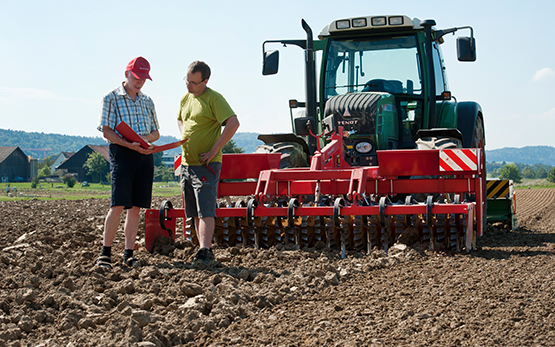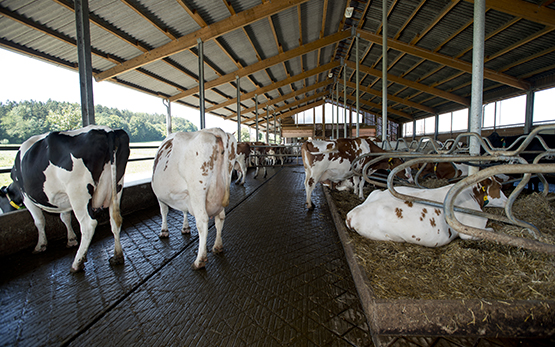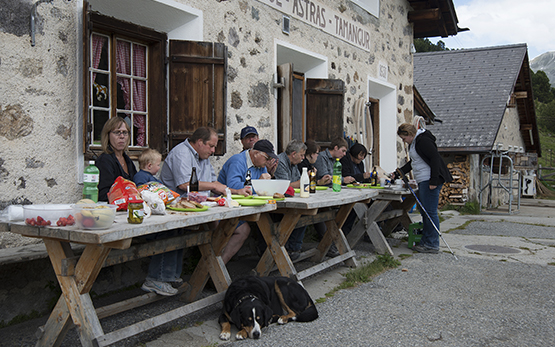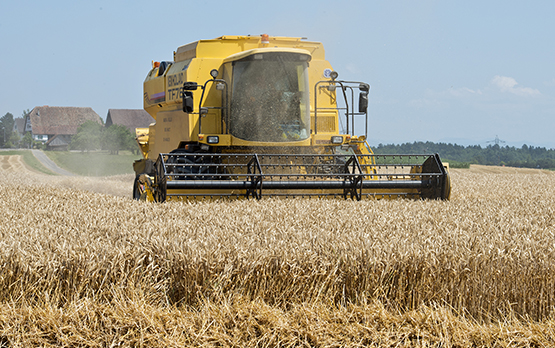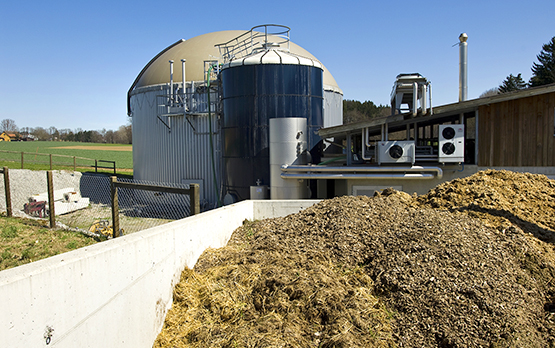van der Meer M., Prunier P., Steffen J., Huber L., Mörch F., Frossard P.-A., Buholzer S.
Grüner Teppich – gezielte Begrünung von Banketten und Randbereichen: Abschlussbericht 2018-2024.
Agroscope Science, 204, 2025, 1-98.
other Languages:
french
Hu R., Klein N., Herzog F., Jan B., Zheng H., Wang L.
Vegetation structure of farmland ditches and its role in promoting bird diversity.
Agriculture, Ecosystems & Environment, 389, 2025, Article 109711.
Brundu G., Follak S., Pergl J., Chapman D., Branquart E., Buholzer S., Fløistad I. S., Fried G., Herbst M., Marchante E., van Valkenburg J., Tanner R.
Risk prioritization of bamboo species in the EPPO region.
Bulletin OEPP = EPPO bulletin, 55, (1), 2025, 81-95.
Ritzel C., Kaiser A., Wang Y., Mack G.
The role of social and personal norms in biodiversity conservation: A segmentation of Swiss farmers.
Journal of Environmental Management, 377, 2025, Article 124605.
Colling G., Glaser M., Buholzer S., Bürger J., Chytrý M., Fanfarillo E., Follak S., Jansen F., Kolářová M., Küzmič F., Lososová Z., Schumacher M., Šilc U., Wietzke A., Dullinger S. and others
Ninety years of alien plant species accumulation across regional and local scales in central European fields.
Agriculture, Ecosystems & Environment, 383, 2025, Article 109483.
Widmer A., Bulas T. M., Metzger K., Guillaume T., Fabian Y., Wüst C., Keller T., Hohl S., Looser F., Füglisthaler D.
Paddy rice production in Switzerland in 2022 and 2023.
Agroscope and Bern University of Applied Sciences. January, 2025, 50 pp.
other Languages:
german | french
Fabian Y., Jeanneret P., Liegeois M., Triquet C.
Biodiversitätsindikatoren für die Landwirtschaft: Aktueller Stand und grosse Herausforderungen: Indicateurs de biodiversité pour l’agriculture: état des lieux et défis majeurs.
In: 12. Nachhaltigkeitstagung. 23. Januar, Publ. Agroscope, Zürich (CH). 2025.
Richner N., Moser L., Buholzer S., Fabian Y.
Langzeitversuch zeigt keine schädlichen Auswirkungen von Heubläsern auf die Vegetation.
Agroscope Science, 199, 2024, 1-13.
Fabian Y., Hutchings C., Wüst C., Jacot-Ammann K., Walder F., Holzkaemper A.
Alternative landwirtschaftliche Kulturen auf Feuchtackerflächen im Umfeld von Mooren in der Schweiz.
Agroscope Science, 190, 2024.
other Languages:
french
van der Meer M., Steffen J., Prunier P., Buholzer S.
Einsatz von Sedum-Matten zur Begrünung von Schottern, Gleisen und Gehwegen in SBB Arealen: Tastversuche (2021–2023).
Agroscope Science, 195, 2024.
Triquet C., Perennes M., Séchaud R., van der Meer M., Fabian Y., Jeanneret P.
What evidence exists on the effect of the main European lowland crop and grassland management practices on biodiversity indicator species groups?: A systematic map.
Environmental Evidence, 13, 2024, 1-18.
van der Meer M., Hutchings C., Buholzer S., Fabian Y.
Standortangepasste Landnutzungen auf vernässenden landwirtschaftlichen Flächen: Beweidung: Arten und Rassen.
Agroscope. Merkblatt Nr. 170, 2024, 18 pp.
other Languages:
french
Fabian Y., Hutchings C., Wüst C., Jacot-Ammann K., Walder F., Holzkaemper A., Klaus V., van der Meer M., Kay S.
Standortangepasste Nutzungen für vernässende landwirtschaftliche Flächen: Hintergrund und allgemeine Informationen.
Agroscope Transfer, 539, 2024.
other Languages:
french
Hutchings C., Fabian Y.
Standortangepasste Landnutzungen auf vernässenden landwirtschaftlichen Flächen: Technik für Feuchtflächen.
Agroscope. Merkblatt Nr. 177, 2024, 4 pp.
other Languages:
french
Hutchings C., Fabian Y.
Standortangepasste Landnutzungen auf vernässenden landwirtschaftlichen Flächen: Kultivierung von Torfmoosen (Sphagnum spp.).
Agroscope. Merkblatt Nr. 176, 2024, 10 pp.
other Languages:
french
Hutchings C., Kay S., Fabian Y.
Standortangepasste Landnutzungen auf vernässenden landwirtschaftlichen Flächen: Weide (Salix sp.) als Kurzumtriebsplantage.
Agroscope. Merkblatt Nr. 175, 2024, 7 pp.
other Languages:
french
Hutchings C., Fabian Y.
Standortangepasste Landnutzungen auf vernässenden landwirtschaftlichen Flächen: Rohrkolben und Schilfröhricht: Verarbeitung und Vermarktung, Wirtschaftlichkeit sowie Auswirkung auf die Standorte.
Agroscope. Merkblatt Nr. 174, 2024, 8 pp.
other Languages:
french
Hutchings C., Fabian Y.
Standortangepasste Landnutzungen auf vernässenden landwirtschaftlichen Flächen: Schilfröhricht (Phragmites australis): Anbau und Ernte.
Agroscope. Merkblatt Nr. 173, 2024, 5 pp.
other Languages:
french
Hutchings C., Fabian Y.
Standortangepasste Landnutzungen auf vernässenden landwirtschaftlichen Flächen: Rohrkolben (Typha spec.): Anbau und Ernte.
Agroscope. Merkblatt Nr. 172, 2024, 7 pp.
other Languages:
french
van der Meer M., Klaus V., Hutchings C., Buholzer S., Fabian Y.
Standortangepasste Landnutzungen auf vernässenden landwirtschaftlichen Flächen: Graslandbestände.
Agroscope. Merkblatt Nr. 171, 2024, 14 pp.
other Languages:
french
Brunner J., Holtdorf l., Fabian Y.
Entscheidungshilfe für Feuchtackerflächen: Anleitung ArcGIS Pro-Tool.
Agroscope. 2024, 12 pp.
other Languages:
french
Holtdorf L., Roberti G., Fabian Y.
Entscheidungshilfe für Feuchtackerflächen: Anleitung Q-GIS-Tool.
Agroscope. 2024, 13 pp.
other Languages:
french
Knollová I., Chytrý M., Bruelheide H., Dullinger S., Jandt U., Bernhardt‐Römermann M., Biurrun I., de Bello F., Glaser M., Hennekens S., Buholzer S., Essl F.
ReSurveyEurope: A database of resurveyed vegetation plots in Europe.
Journal of Vegetation Science, 35, (2), 2024, 1-18.
Widmer A., Tamagni L., Wüst C., Paul S. M., Volpe V., Jocher M., Giger R., Dötterl S., Keller T., Leifeld J.
Mitigating greenhouse gas emissions from managed organic soils in the temperate zone by paddy rice cultivation.
In: EGU General Assembly 2024. 14-19 April, Publ. European Geosciences Union (EGU), Vienna (AT). 2024, 1.
Glaser M., Dullinger S., Moser D., Wessely J., Chytrý M., Lososová Z., Axmanová I., Berg C., Bürger J., Buholzer S., Buldrini F., Chiarucci A.
Pronounced turnover of vascular plant species in Central European arable fields over 90 years.
Agriculture, Ecosystems & Environment, 361, 2024, 1-11.
Fabian Y., Roberti G., Zorn A., Szerencsits E., Gramlich A.
Die Nutzung von vernässenden Ackerflächen neu denken.
Geomatik Schweiz, 121, (7-8), 2023, 161-164.
Riedel S., Widmer S., Babbi M., Buholzer S., Grünig A., Herzog F., Richner N., Dengler J.
The Historic Square Foot Dataset: outstanding small-scale richness in Swiss grasslands around the year 1900.
Journal of Vegetation Science, 34, (5), 2023, 1-11.
Fabian Y., Roberti G., Herzog F.
Feucht(Acker)Flächen - (k)eine schwierige Entscheidung.
In: Konferenz der Beauftragten für Natur- und Landschaftsschutz (KBNL). 14. Juni, Biel. 2023.
other Languages:
french
Fabian Y., Roberti G., Herzog F.
Feucht-(Acker-)Flächen – (k)eine schwierige Entscheidung.
In: 16. Tagung Landmanagement. 18. Januar, Zürich. 2023, 1-15.
Fabian Y., Roberti G., Jacot-Ammann K., Gramlich A., Benz R., Szerencsits E., Churko G., Prasuhn V., Leifeld J., Zorn A., Walter T., Herzog F.
Ripensare l’utilizzo delle superfici coltive periodicamente inondate: Sintesi del progetto «superfici (coltive) umide».
Agroscope Science, 145, 2022.
Roberti G., Gramlich A., Benz R., Szerencsits E., Churko G., Prasuhn V., Leifeld J., Zorn A., Jacot-Ammann K., Herzog F., Fabian Y.
Entscheidungshilfe für feuchte und nasse Ackerflächen: Unterstützung bei der Identifikation von Flächen, auf denen Alternativen zur Entwässerung in Betracht zu ziehen sind.
Agroscope Transfer, 449, 2022.
other Languages:
french | italian
Jeanneret P., Pozzi S., Martinez Nunez C.
Spiders indicate delivery of an agri-environment scheme at multiple diversity levels.
Frontiers in Ecology and Evolution, 10, 2022, 1-17.
Fabian Y., Roberti G., Jacot-Ammann K., Gramlich A., Benz R., Szerencsits E., Churko G., Prasuhn V., Leifeld J., Zorn A., Walter T., Herzog F.
Die Nutzung von vernässenden Ackerflächen neu denken: Synthese des Projektes «Feucht(Acker)Flächen».
Agrarforschung Schweiz, 13, 2022, 198-209.
other Languages:
french
Glaser M., Berg C., Buholzer S., Buldrini F., Bürger J., Chiarucci A., Chytrý M., Dřevojan P., Follak S., Küzmič F., Lososová Z., Meyer S., Moser D., Pyšek P., Richner N. and others
AgriWeedClim database: A repository of vegetation plot data from Central European arable habitats over 100 years.
Applied Vegetation Science, 25, (3), 2022, 1-13.
Holtorf L., Roberti G., Fabian Y.
Entscheidungshilfe für Feuchtackerflächen: Anleitung QGIS-Tool.
Agroscope, Zürich. November, 2022, 11 pp.
other Languages:
french
Gardein H., Fabian Y., Westphal C., Tscharntke T., Hass A.
Ground-nesting bees prefer bare ground areas on calcareous grasslands.
Global Ecology and Conservation, 39, 2022, 1-13.
Jacot-Ammann K., Brönnimann V., Fabian Y.
Ökologischer Nassreis: Anbauerfahrungen nördlich der Alpen 2021.
Agroscope, Zürich. März, 2022, 32 pp.
other Languages:
french
Séchaud R., van der Meer M., Fabian Y., Jeanneret P.
What evidence exists on the effect of the main European lowland crop and grassland management practices on biodiversity indicator species groups?: A systematic map protocol.
Environmental Evidence, 11, (27), 2022, 1-9.
Herrera Krings C., Darras K., Hass A., Batáry P., Fabian Y.
Not only hedgerows, but also flower fields can enhance bat activity in intensively used agricultural landscapes.
Basic and Applied Ecology, 63, 2022, 23-35.
Fabian Y., Herzog F., Jacot-Ammann K., Szerencsits E.
Feucht(Acker)Flächen – Keine leichte Entscheidung!
In: Nachhaltigkeitstagung 22. 27. Januar, Agroscope Reckenholz Affoltern Zürich. 2022.
Buholzer S., Marazzi B. Info Flora, Nobis M. WSL; Birmensdorf
Früherkennung von Problemarten z.B. Kanadisches Berufkraut ( Erigeron canadensis).
In: Cercle Exotique; 3. nationalen Neobiota-Tagung. 21.01., Online - Amt für Abfall, Wasser, Energie und Luft (AWEL). 2022, 1-13.


